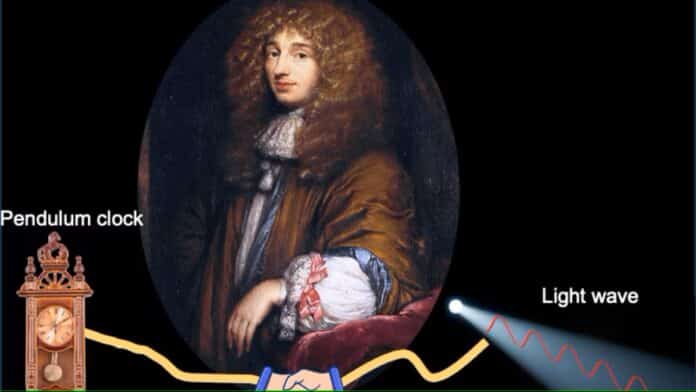Optics and mechanics are two branches of physics, but they are connected. It is common knowledge that mechanical descriptions of particle motion have direct analogs in the geometrical/ray treatment of light. However, few published connections exist between classical physics and coherence wave optics.
A new study by researchers at the Stevens Institute of Technology reports links between the two through a systematic quantitative analysis of polarization and entanglement. Using a 350-year-old mechanical theorem, researchers revealed a new connection between the two perspectives to explain some of the most complex behaviors of light waves.
The work also establishes for the first time a direct and complementary relationship between a light wave’s degree of polarization and its degree of non-quantum entanglement. As one increases, the other decreases, making it possible to determine the level of entanglement and vice versa directly from the level of polarization.
As a result, it is possible to infer difficult-to-measure optical features like amplitudes, phases, and correlations—possibly even those of quantum wave systems—from something much simpler to measure: light intensity.
It’s been very well known that light sometimes behaves like a wave and sometimes like a particle. But, reconciling those two frameworks has proven extremely difficult. This new study solves this problem by showing strong connections between wave and particle concepts at the quantum level and at the level of classical light waves and point-mass systems.
The theorem scientists used was originally developed by Huygens in a 1673 book on pendulums. It explains how the energy required to rotate an object varies depending on the object’s mass and the axis around which it turns.
Xiaofeng Qian, assistant professor of physics at Stevens, said, “This is a well-established mechanical theorem that explains the workings of physical systems like clocks or prosthetic limbs. But we were able to show that it can offer new insights into how light works, too.”
This 350-year-old theorem explains how masses and their rotating momentum interact. Then, how could it be applied to light where there is no mass to measure?
Scientists interpreted the intensity of light as the equivalent of a physical object’s mass. They then mapped those measurements onto a coordinate system that could be interpreted using Huygens’ mechanical theorem.
Qian said, “Essentially, we found a way to translate an optical system so we could visualize it as a mechanical system, then describe it using well-established physical equations.”
“After visualizing a light wave as part of a mechanical system, new connections between the wave’s properties immediately became apparent — including the fact that entanglement and polarization stood in a clear relationship.”
“This was something that hadn’t been shown before, but that becomes very clear once you map light’s properties onto a mechanical system. What was once abstract becomes concrete: using mechanical equations, you can measure the distance between the ‘center of mass’ and other mechanical points to show how different properties of light relate to one another.”
“Clarifying these relationships could have important practical implications, allowing subtle and hard-to-measure properties of optical or quantum systems — to be deduced from simpler and more robust light intensity measurements. More speculatively, the team’s findings suggest the possibility of using mechanical systems to simulate and better understand the strange and complex behaviors of quantum wave systems.”
“That still lies ahead of us, but with this first study, we’ve shown clearly that applying mechanical concepts makes it possible to understand optical systems in an entirely new way. Ultimately, this research is helping to simplify the way we understand the world by allowing us to recognize the intrinsic underlying connections between apparently unrelated physical laws.”
Journal Reference:
- Xiao-Feng Qian and Misagh Izadi. Bridging coherence optics and classical mechanics: A generic light polarization-entanglement complementary relation. Physical Review Research. DOI: 10.1103/PhysRevResearch.5.033110
